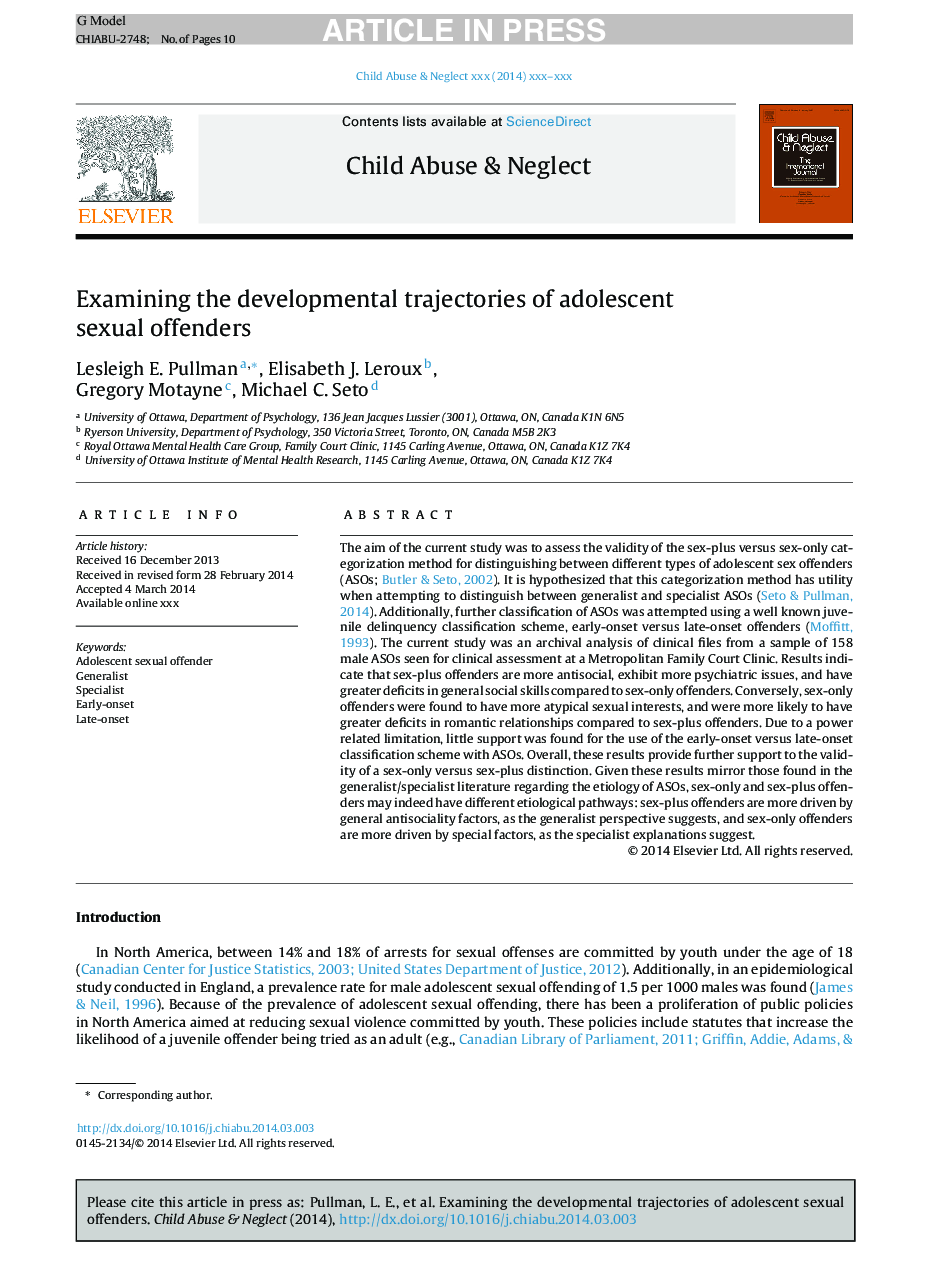| Article ID | Journal | Published Year | Pages | File Type |
|---|---|---|---|---|
| 10310713 | Child Abuse & Neglect | 2014 | 10 Pages |
Abstract
The aim of the current study was to assess the validity of the sex-plus versus sex-only categorization method for distinguishing between different types of adolescent sex offenders (ASOs; Butler & Seto, 2002). It is hypothesized that this categorization method has utility when attempting to distinguish between generalist and specialist ASOs (Seto & Pullman, 2014). Additionally, further classification of ASOs was attempted using a well known juvenile delinquency classification scheme, early-onset versus late-onset offenders (Moffitt, 1993). The current study was an archival analysis of clinical files from a sample of 158 male ASOs seen for clinical assessment at a Metropolitan Family Court Clinic. Results indicate that sex-plus offenders are more antisocial, exhibit more psychiatric issues, and have greater deficits in general social skills compared to sex-only offenders. Conversely, sex-only offenders were found to have more atypical sexual interests, and were more likely to have greater deficits in romantic relationships compared to sex-plus offenders. Due to a power related limitation, little support was found for the use of the early-onset versus late-onset classification scheme with ASOs. Overall, these results provide further support to the validity of a sex-only versus sex-plus distinction. Given these results mirror those found in the generalist/specialist literature regarding the etiology of ASOs, sex-only and sex-plus offenders may indeed have different etiological pathways: sex-plus offenders are more driven by general antisociality factors, as the generalist perspective suggests, and sex-only offenders are more driven by special factors, as the specialist explanations suggest.
Related Topics
Health Sciences
Medicine and Dentistry
Perinatology, Pediatrics and Child Health
Authors
Lesleigh E. Pullman, Elisabeth J. Leroux, Gregory Motayne, Michael C. Seto,
